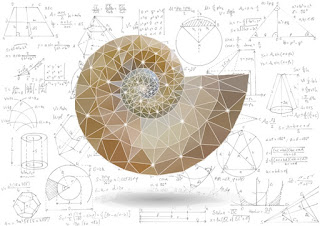DESMA 9 Week 7 Blog
The overlap between neuroscience and art is an interesting one, and definitely worth exploring. This relationship started rather recently, but is quickly evolving and becoming more and more prevalent. In Dr. Vesna's lecture we see that Santiago Ramon y Cajal was the founder of neuroanatomy and was specifically interested in the connection patterns of neurons by shape (Vesna).
 | |
| Drawing of Purkinje and Granule Cells from Pigeon Ceregellum by Santiago Ramon y Cajal, 1899. http://public.media.smithsonianmag.com/legacy_blog/neurons.jpg |
One such modern extension of this interest is microetching. This is a technique where neural junctions are inscribed into metal such as gold with the aim of illustrating the connections of the brain (Drinker). The picture changes based on the position of the observer, which keeps the picture simple enough to analyze while still conveying the inherent complexity of the system.
My experience in the neuroscience world came when I did research in the Laboratory of Neuro Imaging my sophomore year. LONI seeks "to improve our understanding of the brain in health and disease" (About Loni). The role I played in this lab was filling in brain MRI scans with color using a computer program. This lab uses art to display the differences between different brain anatomies with a particular focus on Alzheimer's Disease and Schizophrenia. This research definitely continues in the vein of phrenology which was founded by Franz Joseph Gall and is the study of mapping areas of the brain to specific functions (Vesna).
 |
| LONI Dementia Variability Graphic http://www.loni.usc.edu/SVG/SVG_Images/Dementia_Var_300x420.jpg |
When Dr. Vesna talked about the CIA Project Mkultra that was focused on mind control, it made me think of the movie Inception, which recently came out in 2010 (Hollywoodstreams). This movie was about the main character devising a scheme to plant an idea in the subconscious of a target by using experimental military shared-dreaming technology. This movie made me think of questions such as: Where does the subconscious end and the conscious begin? and What secrets about me would people be able to discover from living in my dream?
In the same way, the discussion about Albert Hofmann's LSD experiments made me reflect on the movie Limitless, which focused on a character who took a pill that instead of debilitating one's brain in a dream-like state, awakened it to a heightened sense of reality (Clevver Movies). This was especially exciting as a UCLA student who always wants to push the limits of productivity.
References:
"About Loni." Laboratory of Neuro Imaging. N.p., n.d. Web. 21 May 2017. <http://www.loni.usc.edu/about_loni/>.
Clevver Movies. "Limitless - Official Trailer [HD]." YouTube. N.p., 31 Mar. 2011. Web. 21 May 2017. <https://www.youtube.com/watch?v=s6UmtZMvMdg>.
Drinker, Will. "An Introduction To Microetching." YouTube. N.p., 21 Mar. 2014. Web. 21 May 2017. <https://www.youtube.com/watch?v=GLt5A29N0zg>.
Hollywoodstreams. "'Inception' Trailer 2 HD." YouTube. N.p., 10 May 2010. Web. 21 May 2017. <https://www.youtube.com/watch?v=66TuSJo4dZM>.
Vesna, Victoria. "Consciousness / Memory." CA, Los Angeles. YouTube. Web. 21 May 2017.



While I definitely see value in heightening dreams, I certainly wonder how that would affect people that more commonly get nightmares. While Professor Vesna talked a lot about dreams, I think this week ignored that many people, myself included, don't always have positive nighttime thoughts. I can't help but wonder if those thoughts are just repressed during the day or if they manifest differently-- kind of like you were saying about where consciousness ends.
ReplyDelete